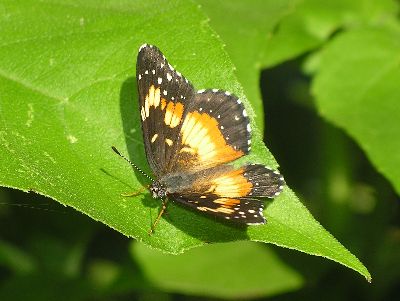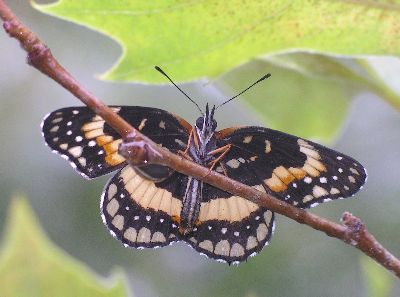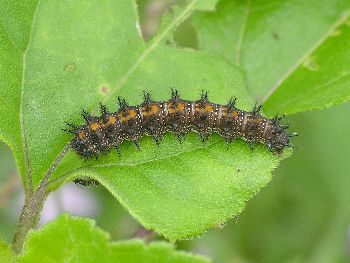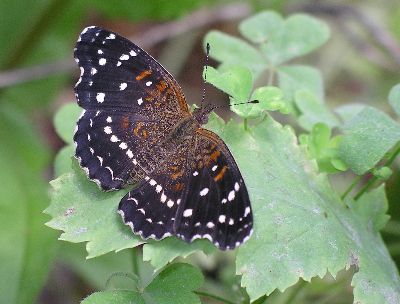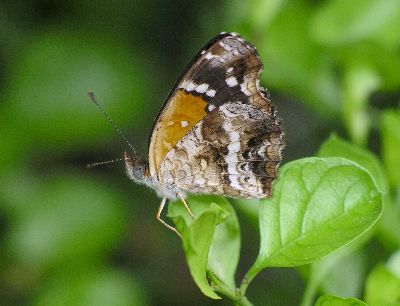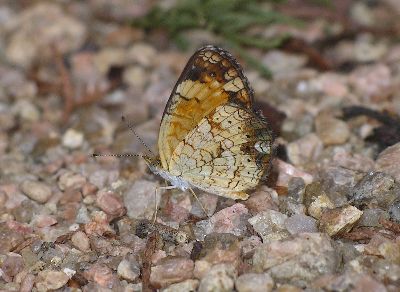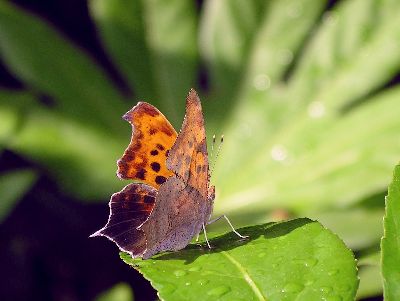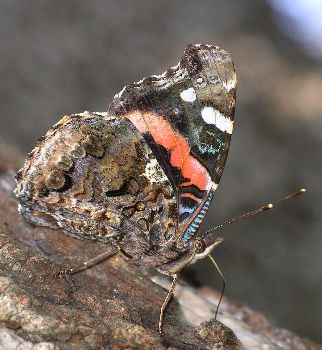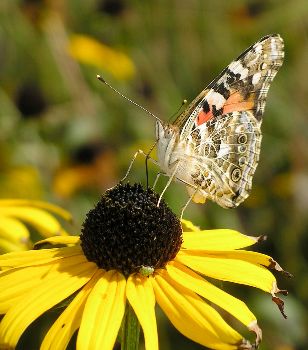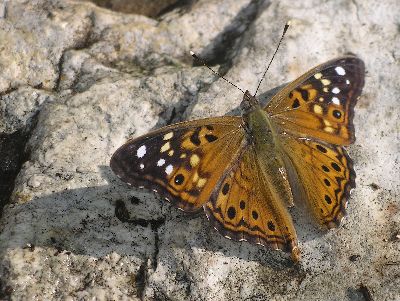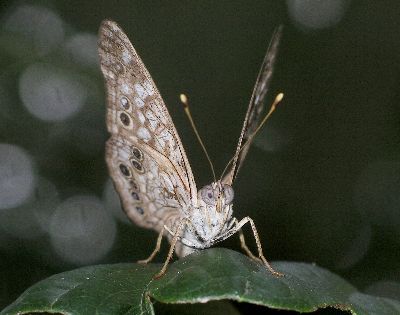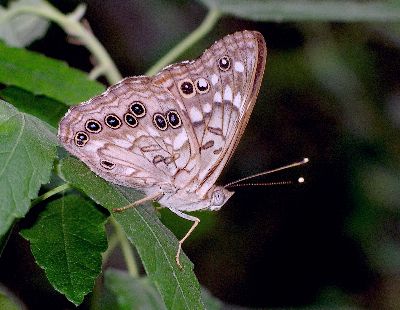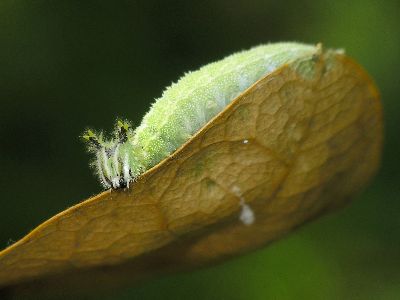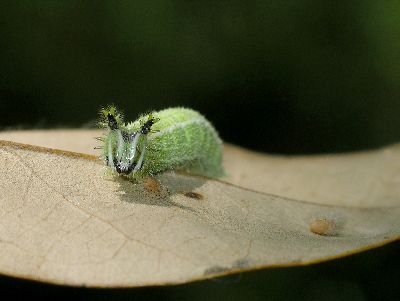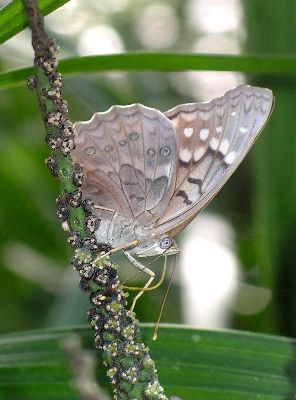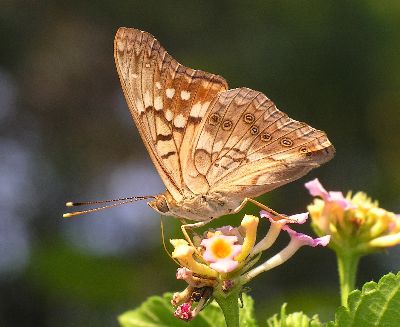The images presented in these galleries are reductions of photos taken by Valerie with a Pentax Optio 450 digital camera. The compression has been increased to 80% (100%=no compression) and the dimensions reduced in order to save bandwidth and facilitate page loading. The information below each image gives the size in pixels and kilobytes of the original file as well as the title by which to request the larger version. All of the original files are in jpeg format, most at about 95% compression, and are suitable for printing, desktop wallpaper, or detailed study. While the images here are free for the taking (right click - save as; do not link to these images directly), the larger versions are also available by sending a request to Valerie via . The frames around the gallery photos are not part of the same file and are only for presentation on this site.
Although the photos are free to use, they are copyrighted by LARVALBUG and remain the property of the owners of this site. We request that any public use of these images be accompanied by a credit to LARVALBUG.COM and, when appropriate, a link to our site (<a href="http://www.larvalbug.com/">LARVALBUG</a>). Commercial use of the large files can be arranged for a modest fee.
To request larger files or ask any questions please send an e-mail to Valerie at .
|
|
Brush-Footed Butterflies, family Nymphalidae. The name of this family relates to the front pair of legs in the adults of both genders. These are very small and held up close to the body, functioning as chemoreceptors. At first glance, these butterflies look like they have only four legs.
Bordered Patch Butterfly (Chlosyne lacinia). Although it is a tropical butterfly, this species can be seen in Austin much of the summer.
Underside of the bordered patch. This individual came from a chrysalis that was formed under the handle of one of our garage doors. We were careful to not harm it for the couple of weeks that it took to develop into a butterfly.
A bordered patch caterpillar, dining on Plateau golden-eye (Viguiera dentata) in our yard.
Texas Crescent (Anthanassa texana). This is a very common little butterfly in our area. The caterpillars sometimes appear in large numbers and eat all the leaves off some of our wildflowers, especially dicliptera and shrimp plant.
Ventral view of the Texas crescent. Unlike other crescents, the Texas crescent has a large notch in its upper wings, giving them a unique shape. In the rear center of the lower wing, the signature light colored crescent mark is visible.
Ventral view of the Pearly Crescent (Phyciodes tharos). Similar to the Texas crescent, this butterfly has more orange on its upper wing surfaces. The crescent marking is clearly visible in the brown patch on the rear of the hindwing.
Question Mark (Polygonia interrogationis). Named for a tiny silvery mark on the ventral hindwing (which only occasionally actually looks like a question mark), this butterfly has different color forms. The individual here was photographed in the summer and so has significant black markings on its wings. During the winter, these are brown. The plant on which the insect is resting is a Japanese aralia (Fatsia japonica).
Ventral view of Red Admiral (Vanessa atalanta). These butterflies frequently feed on tree sap as this individual is doing. Sometimes, this species is very numerous here in Austin, then will be absent for long periods. One spring, there were dozens of red admirals in our retama trees, although they were not blooming yet. The reason was soon obvious; when the new green leaves and buds disappeared from the trees and a rain of caterpillar poop carpeted the driveway, we knew that the butterflies had been laying eggs.
Ventral view of Painted Lady (Vanessa cardui) on Black-eyed Susan (Rudbeckia fulgida). Taken during a September visit to a botanical garden in Minnesota, there were hundreds of these butterflies enjoying one of the last warm spells of the season. The painted lady is the widely distributed butterfly in the world. Like monarchs, this species is known for migrating.
Hackberry Butterfly (Asterocampa celtis). This individual is a male, distinguished from the female of the species by the angular shape of the hindwings. Those of the female are rounded instead of triangular.
Another view of a male Hackberry Butterfly. The name comes from the larval host plants, which are very common in our area of Texas. This particular individual had wings that were rather the worse for wear and this angle shows it to its best advantage.
Ventral view of a male Hackberry Butterfly on spearleaf swamp mallow (Pavonia hastata). Unlike the previous photo, this butterfly has perfect wings, as yet undamaged by much use. Hackberry butterflies are strong fliers and the males often stake out territories which they patrol in the evenings as they watch for females. I've been attacked several times by these butterflies, which will actually hit a person in the head or shoulder. They also attack balls thrown through their "air space."
Hackberry Butterfly caterpillars feed on hackberry tree leaves, which is no big surprise. The only time I notice them is when they fall to the ground or a searching for a place to pupate. This one is on a dead live oak leaf, which made a nice portrait setting.
Another view of the same caterpillar shown above. The head has little spined "horns" which look a lot like spiky ears. The small brown fuzzy things on the leaf with the caterpillar are hatched wasp cocoons.
Ventral view of a female Tawny Emperor (Asterocampa clyton). Closely related to the hackberry butterfly, the tawny emperor is also common in our area. This species also exhibits the difference in wing shape between the male and female, with the female in this picture displaying the identifying rounded lower wing. The tiny flowers on which the butterfly is feeding belong to a palm.
Ventral view of a male Tawny Emperor. The strong golden color of this butterfly is more a result of early morning light than actual pigment. The butterfly is feeding on lantana (Lantana camara).
|
